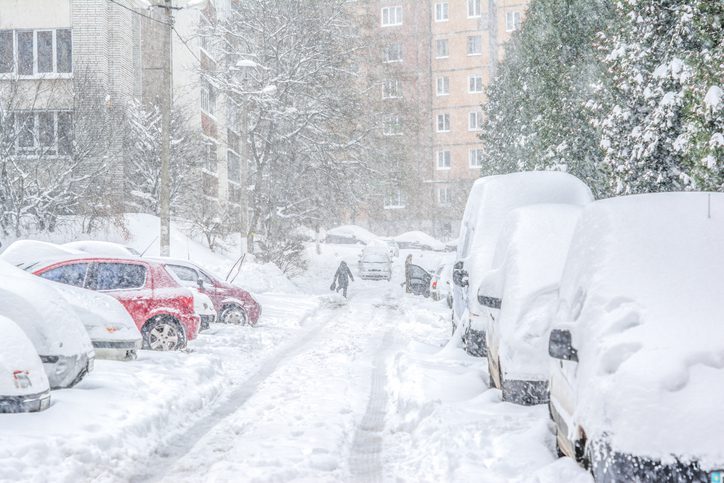Freezing weather – some guidance for you and your clients

Authored by Aviva
With widespread freezing weather forecast, we thought we’d share some useful guidance that you can pass on to your clients to protect their businesses and homes in cold weather; what to do if they experience a frozen or burst pipe and tips for driving in snow and ice.
For your Commercial clients
Our Winter Risk Management Guidance covers driving in adverse weather conditions, the effect of freezing temperatures on buildings and escape of water advice. There’s also a version you can dual brand with your logo on our Broker Create tool on Broker Mentor. This is all written with your clients in mind, so please take advantage of these free-to-use tools.
For your Personal Lines clients
Protecting your home in cold weather
Lag your pipes. Insulate all visible pipes with lagging, available from most DIY stores. Particularly focus on exposed pipes in small spaces, such as the attic. Cold water tanks, normally found in the loft, can also be covered with an insulation jacket.Let warm air flow. If your pipes and tanks are in unheated loft spaces or forgotten cupboards, open the hatch or door occasionally to allow warmer air to circulate around them.Think about how you use your heating – particularly if you’re away. If you’re not at home or are going away for a while, consider setting your thermostat at a low level, or set your timer to allow your heating to come on occasionally, rather than turning it off altogether. This can help avoid pipes falling to a temperature where water can freeze inside them.Turn off outside taps. Where possible, shut off the water supply to outside taps and then open the taps to drain off any excess water, so it can’t freeze inside the pipes.Repair dripping taps. Leaky taps can block your pipe and cause damage if they freeze. Test each of your taps by turning them fully off. If any continue to drip, get them fixed.Turn off water when travelling. If you’re heading away, you may wish to turn your water off and drain the system to potentially prevent any damage while you’re not at home.
How to deal with frozen and burst pipes
Here are some steps you can take if you suspect you have a frozen or burst pipe. If one or more of your taps aren’t working, it’s a good idea to check with your neighbours that they have water first, just in case it’s a wider problem with the water supply.
This general guidance on tackling frozen and burst pipes could change, or it might not be right for your circumstances, and we can’t be held responsible for any possible outcome from following it. If you do decide to tackle a frozen or burst pipe by yourself, it could lead to further damage that might not be covered by your home insurance.
Frozen pipes
Turn off the water supply. Switch off the main water supply first using your stopcock and open all the cold taps to help relieve the pressure on the frozen pipe.Locate the freeze. Check the obvious places, like pipes outside or in unheated areas of your home.
You could also try locating the frozen pipe by checking the flow of water from things like taps and toilets throughout your home. If the pipes in one room or area of the house aren’t working, that could indicate where the freeze is.
It isn’t always easy to identify when a pipe is actually frozen. And in many cases, it’s a good idea to call your home insurer or a reputable plumber for help.
Let the thaw commence. If you do find the frozen pipe, you can try gently thawing the affected area using a hairdryer on its lowest setting, a hot water bottle, or warm towels. Never use a blowtorch or heat gun, as this can damage the pipe.
A burst pipe
Turn off the water supply. Switch off the main water supply using the stopcock. You may also need to turn off the cold-water tank. Doing this should help reduce the amount of flooding the burst pipe causes in your home.Drain the system. Turn on all your cold taps and leave them open to allow the water in the system to completely drain away. Once the water has finished draining, turn them off again. Similarly, you should flush all your toilets to help drain the water.Make sure your electrics are safe. If there’s a chance any of your electrics have gotten wet, turn off the power at the mains and call in a qualified electrician for help.Soak up any water. If the leak is small, you can clean it up using towels. Use buckets if it’s coming through the ceiling, and if your ceiling starts to bulge, the structural integrity may be at risk and you’ll need to call a professional to check the damage.Call your insurer. Call your insurer as soon as you can to make a claim and get advice on what to do next. You should take photos of any damage to your home or belongings.
Driving in snow and ice
Snow and ice affect the conditions of the road and can have a serious impact on your driving. Here’s some guidance about staying safe in these conditions:
When driving in any poor weather conditions, remember to follow these three golden rules:Reduce your speedIncrease the distance between you and the vehicle in frontDrive smoothly, without sudden acceleration or brakingSnowy and icy roads are at their most hazardous as the ice begins to thaw, leaving uneven surface water which reduces your car’s grip on the road.Use the highest gear possible to avoid wheel spin, but make sure your speed doesn’t creep up. Remember to use your brakes gently too so you don’t lock the wheels and risk skidding.
What should I do if my car skids?
You can reduce your chance of skidding by maintaining a low speed, especially around bends, and avoiding harsh acceleration, braking or steering.If you do skid, take your feet off the pedals and steer into the direction of the skid (not against it).
Our claims teams will be on hand to support you and your clients when you need us.
You can find all the details of our contact centres and your Claims Service Managers on our broker claims page. And don’t forget that if you’re registered for our ‘Notify Claim’ functionality, you’ll be able to notify us of any motor claim online too.
If you’re not registered, getting started is simple. You’ll first need to be registered for the Aviva Broker website. Once registered, log in, go to the Claims tab, and select the ‘Request access here’ button. Your access will be enabled within 48 hours, and you’ll receive a confirmation email. The ‘Notify Claim’ button is located in the Claims tab alongside ‘Track Claim’ and ‘Claims Data’.
Of course, for a large/complex claim or if help is needed immediately, contacting us by phone remains the best route.







